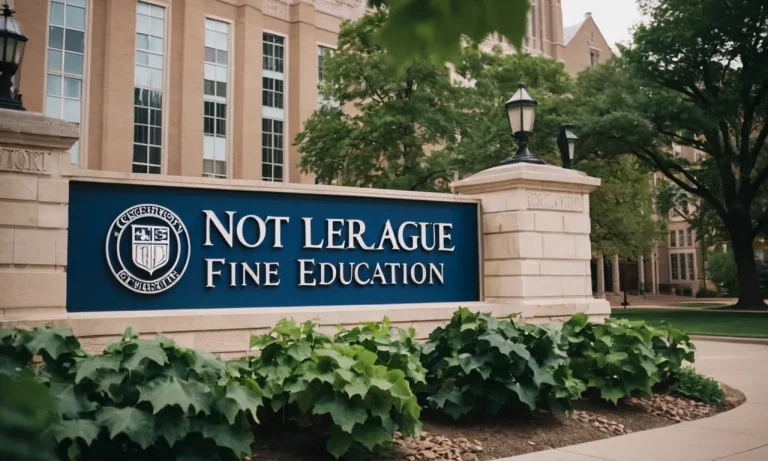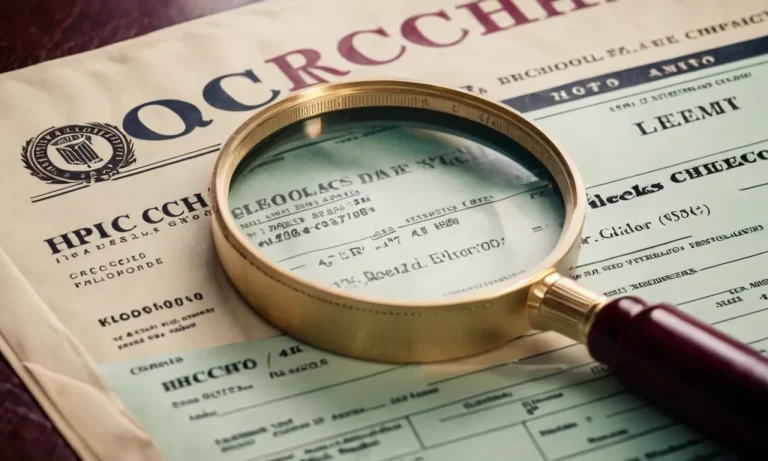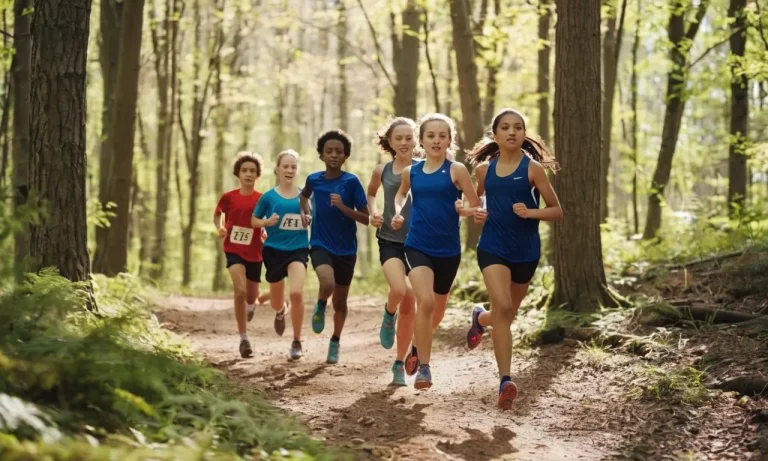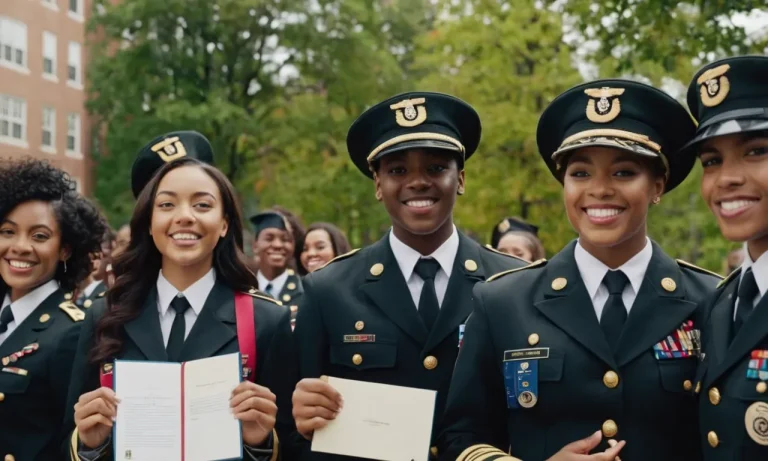Dealing with a bad high school coach can be a frustrating and demoralizing experience for both students and parents. Whether it’s a coach who exhibits unprofessional behavior, lacks proper training, or simply fails to bring out the best in their team, it’s crucial to address the issue promptly.
If you’re short on time, here’s a quick answer to your question: To get rid of a bad high school coach, you need to document specific incidents, follow the proper channels within the school administration, and present a well-supported case for their removal or reassignment.
In this comprehensive article, we’ll explore the steps you can take to address a problematic coaching situation, including gathering evidence, navigating the school’s complaint process, and advocating for a positive change in leadership.
We’ll also discuss the importance of maintaining professionalism and seeking support from other stakeholders throughout the process.
Identify and Document Specific Concerns
When dealing with a problematic high school coach, it’s crucial to identify and document specific concerns to build a strong case. This process not only helps pinpoint the issues but also provides a paper trail that can be used as evidence if further action is required.
Here are some common areas to focus on:
Unprofessional Behavior
Coaches should maintain a professional demeanor at all times. Look out for instances where the coach exhibits inappropriate behavior, such as verbal abuse, physical aggression, or disrespect towards players, officials, or other staff members.
According to a study by the National Federation of State High School Associations, 42% of high school athletes reported experiencing verbal abuse from their coaches.
Lack of Proper Training or Qualifications
Coaches should possess the necessary training and qualifications to ensure the safety and well-being of their players. Document any instances where the coach demonstrates a lack of knowledge in areas such as proper technique, injury prevention, or sport-specific rules and regulations.
The Aspen Institute’s Project Play emphasizes the importance of qualified coaches in promoting positive youth sports experiences.
Failure to Motivate or Develop Players
A good coach should not only teach the technical aspects of the sport but also inspire and develop players’ skills and confidence. Take note of situations where the coach fails to provide constructive feedback, neglects to address individual player needs, or employs coaching methods that demotivate or discourage players.
According to a survey by Positive Coaching Alliance, 76% of athletes cited “motivating me to do my best” as a key factor in determining a great coach.
Favoritism or Discrimination
Coaches should treat all players fairly and without bias. Document instances where the coach displays favoritism towards certain players or discriminates against others based on factors such as gender, race, or ability level.
A study by Women’s Sports Foundation found that 41% of girls reported experiencing discrimination or unfair treatment in sports.
Remember, the more detailed and factual your documentation is, the stronger your case will be. Keep a log of dates, times, and specific incidents, and gather any supporting evidence, such as emails, recordings, or witness statements.
With a well-documented file, you’ll be better equipped to address the issue and advocate for positive change in your high school’s athletic program. Don’t be afraid to speak up – your efforts could make a significant difference in creating a healthier and more positive environment for student-athletes.
Understand the School’s Policies and Procedures
Before taking any action against a problematic high school coach, it’s essential to thoroughly understand the school’s policies and procedures. This step is crucial because it sets the foundation for a legitimate and effective complaint process.
By familiarizing yourself with the rules and regulations, you can navigate the situation professionally and increase your chances of a positive outcome.
Review the School’s Code of Conduct
Every educational institution has a code of conduct that outlines the expected behavior and standards for staff members, including coaches. This document typically covers areas such as professional conduct, ethical responsibilities, and guidelines for interacting with students.
According to a survey by the National Association of Secondary School Principals, over 90% of schools have a comprehensive code of conduct in place. Review this document carefully to determine if the coach’s actions violate any specific policies or guidelines.
Familiarize Yourself with the Complaint Process
Most schools have a well-defined process for filing complaints against staff members. This process may involve submitting a written complaint, gathering supporting evidence, and following a specific chain of command.
The complaint process is often outlined in the school’s handbook or on their website. For example, the New York State School Boards Association provides a detailed sample policy on public complaints that schools can adopt.
Familiarizing yourself with this process ensures that your complaint is properly filed and handled according to established protocols.
Determine the Appropriate Chain of Command
Understanding the chain of command within the school’s administrative structure is crucial. This typically involves reporting the issue to the coach’s immediate supervisor, such as the athletic director or principal.
If the issue is not resolved at that level, you may need to escalate the complaint to higher authorities, such as the superintendent or the school board. Did you know that according to a study by the National Interscholastic Athletic Administrators Association, over 60% of complaints against coaches are initially handled by the athletic director? By following the proper chain of command, you demonstrate respect for the school’s organizational structure and increase the likelihood of a fair and thorough investigation.
Remember, navigating the process of addressing a problematic coach can be challenging, but by understanding the school’s policies and procedures, you can ensure that your concerns are heard and addressed appropriately.
Don’t hesitate to seek guidance from school administrators or trusted advisors if you encounter any roadblocks or uncertainties along the way. 😊
Build a Strong Case for Removal or Reassignment
When seeking the removal or reassignment of a problematic high school coach, it’s crucial to build a solid case that demonstrates the coach’s negative impact on student-athletes and the need for positive leadership.
This process requires gathering substantial evidence and witness statements to support your claims.
Gather Witness Statements and Supporting Evidence
The first step is to collect witness statements from individuals who have firsthand knowledge of the coach’s behavior or actions. These can include student-athletes, parents, fellow coaches, or school administrators.
Encourage them to provide detailed accounts of specific incidents or patterns of behavior that illustrate the coach’s unsuitability for the position. Additionally, gather any physical evidence, such as emails, text messages, or recordings, that corroborate the witness statements.
According to a study by Athletic Business, nearly 80% of student-athletes have experienced some form of emotional abuse from coaches. By compiling a comprehensive collection of witness accounts and supporting evidence, you can build a strong case that highlights the coach’s negative impact on the well-being and development of student-athletes.
Highlight the Impact on Student-Athletes
It’s essential to emphasize how the coach’s actions or behavior have affected the student-athletes, both on and off the field. Provide specific examples of how the coach’s conduct has hindered the athletes’ performance, mental health, or overall development.
🤔 For instance, has the coach’s behavior led to a decline in team morale, increased anxiety or stress among athletes, or a loss of passion for the sport? These tangible examples will help demonstrate the urgency of the situation and the need for change.
According to the National Federation of State High School Associations, coaches play a critical role in shaping the character and values of student-athletes. A negative coaching environment can have lasting impacts on an athlete’s confidence, self-esteem, and overall well-being. 😔
Emphasize the Need for Positive Leadership
While highlighting the coach’s shortcomings, it’s equally important to emphasize the need for positive leadership in the program. Outline the qualities and characteristics that a successful coach should possess, such as effective communication skills, a commitment to fostering a positive team culture, and a genuine interest in the holistic development of student-athletes.
👏
Share examples of how a supportive and encouraging coaching environment can positively impact student-athletes, both on and off the field. This could include improved academic performance, increased self-confidence, and a stronger sense of teamwork and camaraderie.
By presenting a compelling vision for the future of the program under positive leadership, you can reinforce the urgency for change.
Remember, building a strong case for removal or reassignment requires diligence, objectivity, and a commitment to the well-being of student-athletes. With a well-documented and compelling case, you can advocate for positive change and create a nurturing environment that supports the growth and success of young athletes.
🎉
Navigate the Complaint Process
When dealing with a problematic high school coach, it’s crucial to follow the proper channels and protocols to ensure your concerns are addressed effectively. Navigating the complaint process can be a delicate matter, but with patience and professionalism, you can increase your chances of a favorable outcome.
Follow the Proper Channels
The first step in addressing a problematic coach is to familiarize yourself with the school district’s policies and procedures for filing complaints. Most districts have a clearly defined chain of command that should be followed.
Typically, this involves first raising your concerns with the coach directly, then escalating the issue to the athletic director or principal if the situation remains unresolved. Bypassing these initial steps can undermine the credibility of your complaint and potentially hinder its resolution.
According to a study by the National Federation of State High School Associations, nearly 80% of high school athletic administrators reported dealing with parent-coach conflicts annually. This highlights the importance of following the established protocols to ensure a fair and transparent process.
Remain Professional and Respectful
Throughout the complaint process, it’s essential to maintain a professional and respectful demeanor. Avoid emotional outbursts or confrontational behavior, as these can undermine your credibility and damage the potential for a constructive resolution.
Instead, present your concerns calmly and objectively, backing them up with specific examples and documentation whenever possible.
Remember, coaches are human too, and they may not always make the best decisions. By approaching the situation with empathy and a willingness to listen, you increase the chances of finding a mutually agreeable solution. As the saying goes, “You catch more flies with honey than vinegar.” 😊
Seek Support from Other Stakeholders
If your initial efforts to resolve the issue with the coach or school administration prove unsuccessful, consider seeking support from other stakeholders. This could include reaching out to parent-teacher associations, booster clubs, or even local media outlets if the situation warrants broader attention.
Building a coalition of like-minded parents or community members can lend more weight to your concerns and demonstrate that the issue extends beyond a single individual. However, it’s essential to ensure that any collective action remains respectful and focused on finding a constructive resolution.
Remember, the ultimate goal is to create a positive and nurturing environment for student-athletes, where they can thrive both on and off the field. By navigating the complaint process thoughtfully and professionally, you increase the chances of achieving that goal. 👏
Conclusion
Addressing a problematic coaching situation in high school can be a challenging process, but it’s essential for ensuring the well-being and development of student-athletes. By identifying and documenting specific concerns, understanding the school’s policies and procedures, building a strong case, and navigating the complaint process professionally, you can increase the chances of effecting positive change.
Remember, the ultimate goal is to create a supportive and nurturing environment where student-athletes can thrive, both on and off the field. With perseverance, collaboration, and a commitment to upholding the highest standards of coaching, you can pave the way for a more positive and rewarding experience for all involved.






